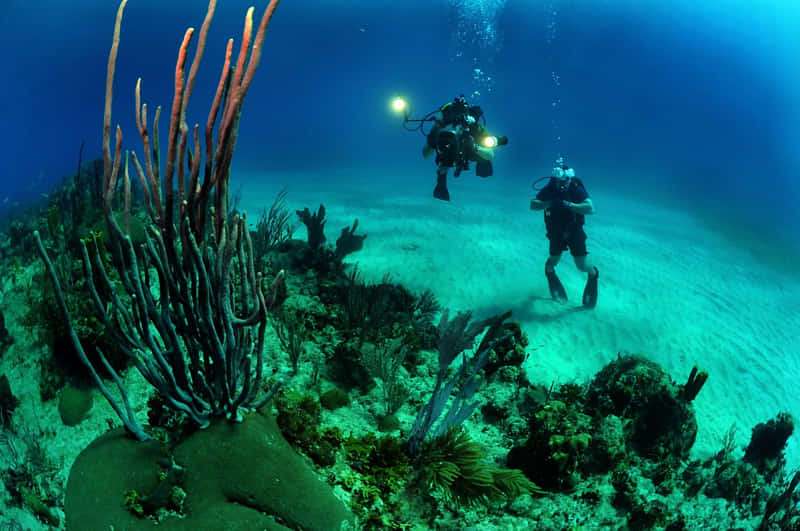Diving is a safe activity. That’s the first thing you should know. However, there are a series of key rules that, like any other sport or recreational activity, ensure your safety. One of these rules, and perhaps the most important, is the safety stop, a strategic pause during your ascent that can make the difference between a pleasant dive and possible complications. If you’re a diver, you’ve probably heard about it, but do you know exactly what it is, when to do it, and how to perform it correctly? Let’s dive into the topic.
Contents
What is a safety stop in diving?
The safety stop is a pause made at about 5 meters of depth for approximately 3 minutes before reaching the surface. Its main goal is to reduce the risk of decompression sickness by allowing dissolved gases in the body to be released in a controlled manner.
Although it’s not always mandatory, it’s recommended in most recreational dives, especially those deeper than 10 meters.
You don’t need to worry too much about the safety stop when diving with an instructor, as they are the ones who control the timing and keep track of how long the dive has lasted, and when and where to make the stop. This is why diving with experienced schools and a professional team is crucial.
Decompression in diving

To understand why the safety stop is so important, we first need to talk briefly about decompression. When we dive, our body absorbs nitrogen due to the pressure of the water. If we ascend too quickly, this gas can form bubbles in our body, causing serious issues such as decompression sickness.
If you want to dive deeper into the topic, here’s a more detailed article: What is decompression in diving?
When and how to perform the safety stop?
Although the safety stop is not mandatory in many cases, it’s good practice to avoid unnecessary risks. Here are some recommendations:
When to do it?
- On dives deeper than 10 meters, even if you haven’t reached the no-decompression limit.
- If you’ve made multiple dives on the same day.
- When diving in cold water or with strong currents, as these can increase effort and nitrogen absorption.
How to do it correctly?

- Ascend slowly to a depth of 5 meters.
- Stay stable at that depth for at least 3 minutes. You can hold onto a mooring line if there’s a current.
- Control your breathing: Relaxed and deep, without holding your breath.
- Check your equipment and surroundings while you wait. This is a good time to observe marine life around you.
- Continue your ascent slowly to the surface.
Tip: If you use a diving computer, it will tell you when and how to perform the safety stop. Don’t ignore its alerts!
Common mistakes and practical tips

Although the safety stop is simple, there are some common mistakes divers make. Here are a few and how to avoid them:
Not doing the safety stop when recommended
Solution: Even if it’s not mandatory, get used to including it in all your dives. It’s a small effort that can prevent bigger problems.
Ascending too quickly after the stop
Solution: Remember that the ascent should be slow and controlled, no faster than 9 meters per minute.
Not maintaining buoyancy during the stop
Solution: Use your buoyancy control device (BCD) and control your breathing to stay stable without effort.
Relying too much on the mooring line
Solution: It’s okay to use it as a reference, but don’t hold on too tightly, as currents can move you and make you lose stability.
The safety stop is an easy habit that can make a big difference in your safety while diving. While it’s not always mandatory, including it in your ascent routine is an excellent practice that will help reduce risks. So, the next time you’re in the last 5 meters of your dive, take those 3 minutes to relax, enjoy, and allow your body to release the nitrogen buildup. Your safety comes first!








0 Comments